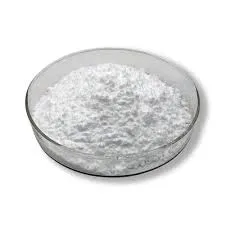
nov . 14, 2024 01:57 Back to list
hydroxyethyl cellulose solubility in water
Understanding Hydroxyethyl Cellulose Solubility in Water
Hydroxyethyl cellulose (HEC) is a non-ionic, water-soluble polymer derived from cellulose, an abundant natural polymer sourced from plant cell walls. As a derivative of cellulose, HEC has numerous applications across various industries, including pharmaceuticals, food products, cosmetics, and construction. One of the most critical properties of HEC that dictates its functionality is its solubility in water. In this article, we will explore the factors that influence the solubility of HEC in water, its implications, and its applications.
The Solubility Mechanism of Hydroxyethyl Cellulose
The solubility of HEC in water primarily depends on its molecular structure. Hydroxyethyl groups (-OCH2CH2OH) are introduced to the cellulose backbone, which enhances the hydrophilicity of the molecule. The introduction of these hydrophilic groups increases the polymer's interaction with water molecules through hydrogen bonding. This interaction is key to understanding why HEC readily dissolves in water at various conditions.
Several factors influence HEC's solubility, including temperature, molecular weight, concentration, and pH of the solution. Generally, as the temperature increases, the solubility of HEC improves due to the enhanced kinetic energy, which allows the polymer chains to overcome intermolecular forces holding them together. Higher temperatures can cause an increase in the number of interactions between HEC and water molecules, leading to better solubilization.
Molecular Weight and Its Impact on Solubility
The molecular weight of HEC is another critical factor affecting its solubility. HEC is available in a range of molecular weights, generally from around 10,000 to 1,000,000 Daltons. Higher molecular weight HEC tends to form more viscous solutions, which might influence solubility. At higher concentrations, especially beyond a critical point, high molecular weight HEC can lead to gel formation rather than complete dissolution. Conversely, lower molecular weight HEC is more soluble and provides a clearer solution when dissolved in water.
Practical Applications of HEC Solubility
hydroxyethyl cellulose solubility in water

The solubility of hydroxyethyl cellulose in water results in a range of beneficial properties, making it suitable for many applications. In the pharmaceutical industry, HEC is often used as a viscosity-modifying agent, helping to control the thickness of formulations such as gels, lotions, and creams. The water solubility of HEC allows for the easy incorporation of active ingredients into formulations, ensuring homogeneity and stability.
In the food industry, HEC functions as a thickening agent and stabilizer in a variety of products, including sauces and dressings. Its ability to dissolve in water and form a viscous solution enhances mouthfeel and texture, providing the desired consistency to food products without imparting any unusual taste.
Cosmetic products also benefit from the solubility of HEC. Its ability to hydrate and retain moisture makes it an excellent ingredient in skin creams, shampoos, and conditioners. HEC contributes to the smooth application of these products while ensuring that they remain effective over time.
Environmental Considerations
As HEC is derived from cellulose, it is biodegradable and considered an environmentally friendly option in comparison to synthetic polymers. Its water solubility also allows for ease of removal in cleaning applications, making it a favorable choice for use in eco-friendly formulations.
Conclusion
In summary, the solubility of hydroxyethyl cellulose in water is a fundamental aspect that dictates its utility across a myriad of applications. Understanding the factors that influence this solubility can help in optimizing HEC’s performance in various formulations. Its multifunctional properties, combined with its environmentally friendly nature, make hydroxyethyl cellulose a valuable ingredient in many industrial sectors, effectively bridging the gap between natural materials and technological advancement.
-
The Ultimate Guide to Mortar Bonding Agent
NewsAug.06,2025
-
Redispersible Powder: The Ultimate Solution for Modern Construction Needs
NewsAug.06,2025
-
HPMC: Unlocking Versatility in Industrial Applications
NewsAug.06,2025
-
HPMC: Revolutionizing the Industry with Superior Formulations
NewsAug.06,2025
-
Discover the Power of Redispersible Polymer Powder
NewsAug.06,2025
-
All You Need to Know About Mortar RDP
NewsAug.06,2025







